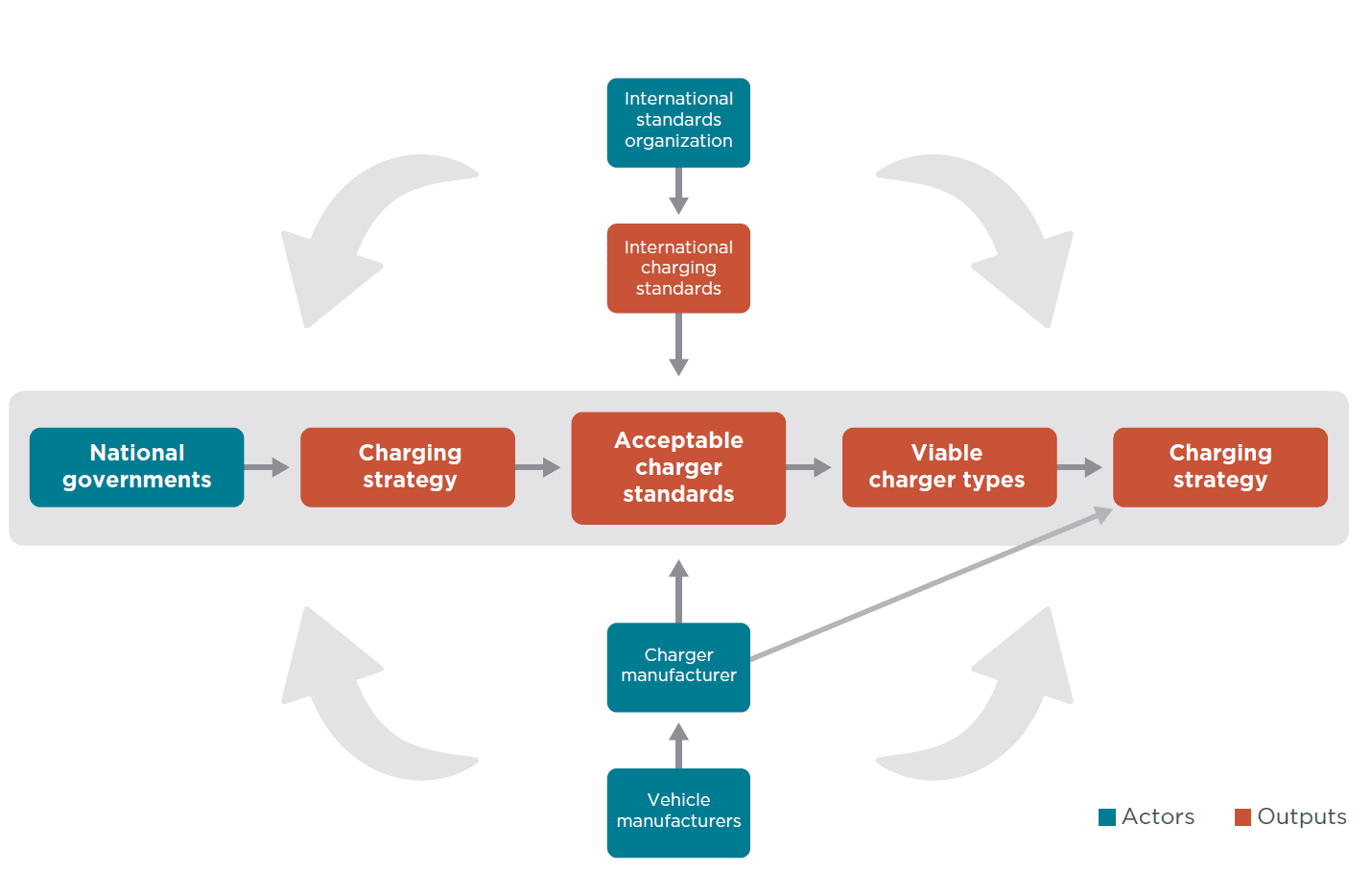Efficient planning and implementation of public chargers: Lessons learned from European cities
Working Paper
Strategies for setting a national electric vehicle charger standard: Relevant factors and the case of Chile
As governments work to address climate and air quality challenges, markets seem ready to supply the chief alternative to ICE technology, electric vehicles (EVs). A common obstacle to rapid growth of EV markets, however, is the absence of public charging infrastructure, whose development is complicated by the broad array of charger types—eight and counting—across major markets today. Part of the hard work for countries transitioning to EVs is settling on a charger standard strategy that accelerates growth of the EV fleet consistent with national development priorities.
This working paper summarizes the development of electric vehicle (EV) chargers and charger standards across the four major vehicle markets of China, the European Union, Japan, and the United States. It identifies three strategies available to national authorities for choosing among charger standards (the technical specifications that shape charger use and ultimately determine which EVs can be used in a country). These strategies range from accepting many chargers without regard to their interoperability, to allowing a single standard to which manufacturers must conform, to incorporating interoperability regulations that accommodate many vehicle types. A country’s choice is consequential: it implies serious investment by governments and manufacturers, and it can define a country’s long-term path for charging infrastructure, making change later difficult and expensive. International standards organizations and vehicle manufacturers each exert influence over national charger strategies, which shape vehicle markets and charging infrastructure within nations. (Figure.)
This paper explores drivers of charger proliferation, the history of charger development, and factors involved in choosing a strategy for setting a charger standard (the country’s status as an EV importer or exporter, the power of private industry innovation, and market size and regulatory strength). It also reviews the case of Chile, which is navigating the question of charger choice as it stands, like many emerging market countries, on the cusp of the EV transition.

Figure. Relationship among key actors and outputs involved in the creation and implementation of charger strategies. Actors are depicted in blue, and outputs in orange. Broad arrows from vehicle manufacturers and from international standards organizations suggest broad influence over the actors and outputs of the middle axis.
